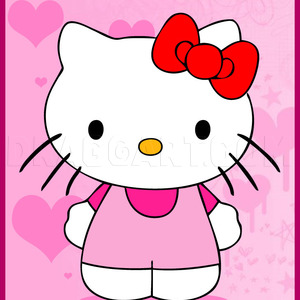1
ENVISIONING IT. First and foremost, it can be hard to successfully convey an image of you creation. That's by all means not a bad thing, it just means that in order to display it the way you want it, you need to put more effort into it. Try and try a
2
YOUR PALLATE. Over the past few years, technology has rapidly evolved, making things more available, and much easier to do. This and the creation of art go hand in hand. Today, there are many available sources for you to use to draw. You could use pe
3
Study, study, study. If you truly want to make a masterpiece, you don't want to screw up on something near the beginning and not realize it until just about the end. Use reference pictures, techniques, other tutorials or pictures related to what you'
4
Even in some cases, it's good to plan things out and have a good look at what you're working with. This is a chart, comparisons between masculine and feminine traits.
5
YOUR VISION. Now, i know your creation may not involve a person, in fact it may not even involve anything living. It just depends upon what you're going for, if you can envision it, you can draw it. This image was a vision of mine not too long ago, i
6
We'll begin with a simple set-up of what's going to be in play. I want a brain, and a body, so, i need to set that up. You can simply do this by making a circle where the brain's at, and a line going down where the body goes down. That perpendicular
7
Now we begin to build. If i needed assistance drawing a brain, I'd go out and find a good reference picture on how to draw it. Otherwise, continue drawing what you envision in your head, but just be sure to keep the guidelines in mind still.
8
Now i add detail. As you can see, my squares, and simplistic shapes have now been molted into my image. If you're having trouble, or seeing that you're making errors creating it, keep an eraser by your side. It's a crucial tool all artists, novice to
9
Now that our visions molted, and we don't have any further outlines to set up, erase your guidelines.
11
The perk to doing digital artwork is that you can easily add shadows and highlights without having to worry about a mess from waxy colored pencils, or whatever other tool you're using. So, i added a new layer, and added some shadows and highlights. I
12
Completely optional; add a background, some effects. Makes the entire thing overall much more lively and pleasuring to the viewer.
14
First we need to set up our figures. Decide what pose your figure will be doing, what your figure will be holding, interacting with, and what they'll be having. At this moment, it's just a figure sketch.
15
Now, to some it may seem odd, but when you're doing humans, in just about any subject, you want to start out with just lines, no clothing at all. You can see from my picture how these bodies fit with the figure poses.
16
Erase the figure lines, but not the head. Now, you can see we have two good body figures to go off of now. The male figure's hand at the moment looks slightly odd, but that doesn't mean we can't fix it later when building upon this sketch we have rig
17
Now, in this set-up I've made, it'd be far more easier to build from the head down. So, here i defined the eyes, hair, nose and mouths of the characters.
18
Now erase that circle guideline for the head. We now have a complete figure, face and hair included. Now, we just need to include clothing and other items.
19
Now we add clothing and items. Now, the hand on the male that is up isn't completed, because he is envisioned to be holding a katana. We want to make sure we correctly place the sleeve and katana helm accordingly.
20
Erase the lines you don't need anymore, and add the katana helm. You'll notice that some lines have changed slightly, that's because of what the two are wearing. When adding clothing you need to keep in mind what the character wears, and how it's goi
21
This'll appear complicated to some, but here, I've used layering techniques. The two sheathes for the katanas are on the man's back, so i put those katana sheathes on a layer, and moved that layer behind the layer i made the man's outline on. This wa
22
Now i simply add color. As you can see, the sheathes layer didn't go over the male, because it was BEHIND its outlined layer, as well as its color layer. If you're using a program like this one, to color an outline, you simply use the magic wand tool
23
Yet again, as in the step prior with the robot, add some shadows and highlights to make it look lively.
Comments 0
Details
April 18, 2012
Description: Hello everyone, this is Protectin369 on a tutorial on how to envision concepts. Yeah, at first it kind of sounds like an odd tutorial, but i made it in the hopes to help others create their visions, taking that image in your head and setting it out on paper. You want to successfully convey your image to your audience, implying what you intended from the start of the creation. This tutorial will assist you in setting out an image in your head, and making it into a reality on paper.























































































